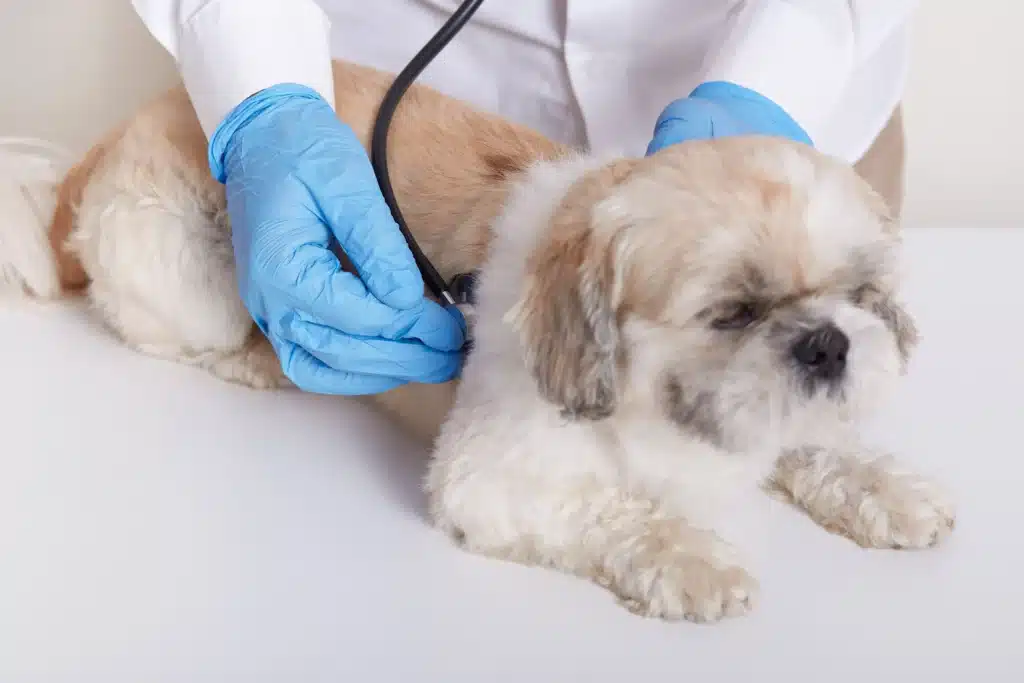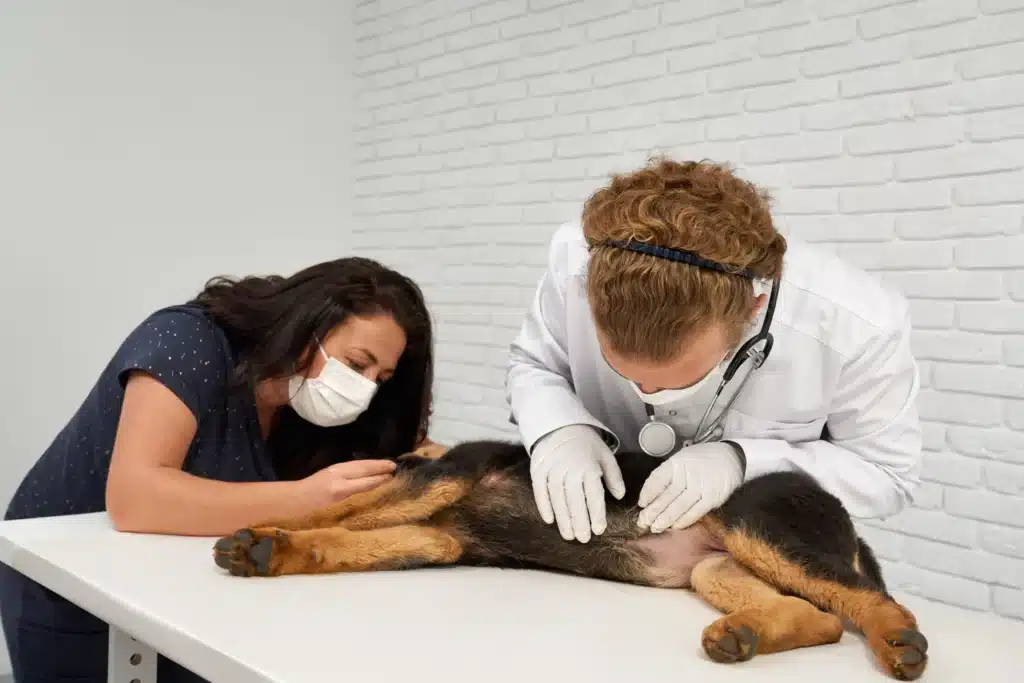Cushing’s disease in dogs, also known as canine hyperadrenocorticism, is a hormonal disorder caused by excess cortisol production from pituitary or adrenal tumors. In its advanced stages, the disease causes systemic organ damage, muscle wasting, infections, clotting disorders, and neurologic decline that reduce both lifespan and quality of life.
This guide explains the final stages of Cushing’s disease, the signs owners should monitor, the expected survival times, and how veterinarians approach monitoring, treatment, and palliative decisions.
What Are the Final Stages of Cushing’s Disease in Dogs?
The final stages of Cushing’s disease in dogs are defined by severe systemic complications of chronic cortisol excess, including muscle wasting, refractory infections, thromboembolism, neurologic decline, and organ failure. Quality of life declines significantly, even under treatment.
According to the Merck Veterinary Manual, long-term cortisol damages the liver, kidneys, cardiovascular system, and immune function. The Cornell University College of Veterinary Medicine notes that pituitary tumors in particular can lead to neurologic decline in late stages.

What End-Stage Signs Should Owners and Vets Monitor?
Dogs in end-stage Cushing’s show profound lethargy, anorexia, muscle loss, recurrent infections, poorly controlled hypertension, neurologic decline (seizures, circling, altered mentation), thromboembolic events, and progressive inability to walk or function normally.
The Merck Veterinary Manual lists these as advanced clinical manifestations.
- Immunosuppression → infections: Cornell Vet College confirms recurrent UTIs and skin infections.
- Neurologic signs: Pituitary macroadenomas cause seizures and circling (Cornell).
- Clotting complications: Haematologica Journal reports hypercoagulability and thromboembolism in dogs with hyperadrenocorticism.
- Metabolic disease: Hypertension, diabetes, and gallbladder mucoceles complicate late stages (Merck).
How Long Can Dogs Live Once Cushing’s Is Advanced?
Median survival after diagnosis is ~510 days (1.4 years). Dogs with pituitary-dependent Cushing’s treated with trilostane live longer, with median survival near 998 days (2.7 years).
A VetCompass study (PMC) found a median survival of 510 days across mixed cases. PubMed studies report ~998 days in PDH cases treated with trilostane.
- PDH = 80–85% of cases, generally better survival.
- ADH prognosis depends on benign vs malignant tumor.
- Dogs with comorbidities like diabetes or calcinosis cutis survive less.

What Does Quality of Life Decline Look Like at the End?
End-stage decline is evident when weakness, anorexia, infections, or seizures persist despite therapy, and welfare cannot be maintained.
According to dvm360, this stage includes persistent pain, breathing difficulty, repeated infections, or clotting events. Quality of life scales are recommended. Haematologica emphasizes thromboembolic events as a fatal marker of decline.
Which Complications Commonly Drive End-of-Life Decisions?
The complications most often leading to euthanasia are recurrent infections, neurologic deterioration, thromboembolism, uncontrolled hypertension or diabetes, and severe frailty.
- Infections: Chronic UTIs and skin pyoderma (Cornell Vet College).
- Neurologic decline: Seizures, dull mentation, circling (Cornell).
- Thromboembolism: Haematologica confirms HAC dogs are hypercoagulable.
How Is End-Stage Cushing’s Disease Confirmed and Monitored?
Diagnosis and monitoring combine clinical signs, endocrine testing, and imaging. The low-dose dexamethasone suppression test (LDDST) is the preferred screening test, while ACTH stimulation is used for therapy monitoring.
The Merck Veterinary Manual notes that ongoing monitoring should include blood pressure, glucose, urinalysis, electrolytes, and neurologic reassessment.

Which Treatments Still Matter in Late Stages?
Even in late disease, adjusting trilostane or mitotane therapy, treating infections, managing hypertension/diabetes, and reducing clotting risks can improve comfort. Surgery (adrenalectomy) may cure adrenal tumors but carries high risk.
- Outcome evidence: Vet Record study on PubMed shows PDH dogs on trilostane live ~998 days.
- Adrenal tumors: Merck VM recommends adrenalectomy for benign tumors; malignant cases have shorter prognosis.
Red Flags Owners Should Not Ignore
- Sudden seizures, circling, collapse (Cornell Vet College)
- Non-healing infections, recurrent UTIs, fever (Cornell)
- Limb swelling or respiratory distress → possible clot (Haematologica)
- Rapid weight/muscle loss, uncontrolled diabetes or hypertension (Merck VM)
Key Takeaways
- End-stage Cushing’s = systemic complications and poor quality of life.
- Signs include: frailty, infections, neurologic decline, thromboembolism.
- Median survival: 510 days overall; ~998 days in treated PDH.
- Action: escalate monitoring and shift to palliative care when decline is irreversible.
Disclaimer: This article is for educational purposes only. It is not a substitute for veterinary diagnosis or treatment. Always consult your veterinarian if your dog shows end-stage symptoms.


